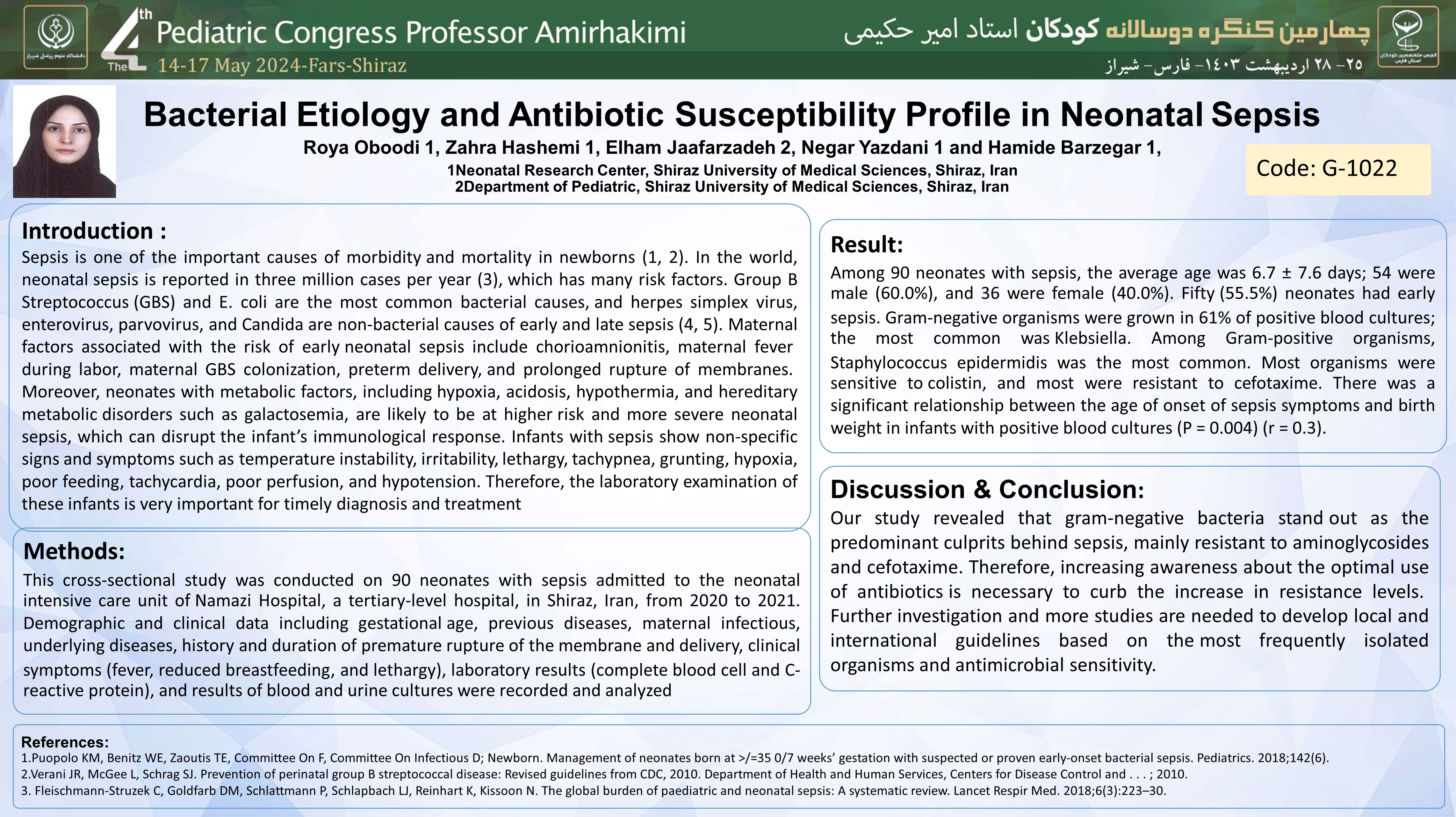علل باکتریایی و حساسیت آنتیبیوتیکی در سپسیس نوزادان
کد: G-1022
نویسندگان: Roya Oboodi © ℗, Zahra Hashemi, Elham Jaafarzadeh, Negar Yazdani, Hamide Barzegar
زمان بندی: زمان بندی نشده!
دانلود: دانلود پوستر
خلاصه مقاله:
خلاصه مقاله
Background: Sepsis is a leading cause of morbidity and mortality in neonates. Objectives: This study aimed to investigate the bacterial profile and antibiotic sensitivity in infants with sepsis. Methods: This cross-sectional study was conducted on 90 neonates with sepsis admitted to the neonatal intensive care unit of Namazi Hospital, a tertiary-level hospital, in Shiraz, Iran, from 2020 to 2021. Demographic and clinical data including gestational age, previous diseases, maternal infectious, underlying diseases, history and duration of premature rupture of the membrane and delivery, clinical symptoms (fever, reduced breastfeeding, and lethargy), laboratory results (complete blood cell and C-reactive protein), and results of blood and urine cultures were recorded and analyzed. Results: Among 90 neonates with sepsis, the average age was 6.7 ± 7.6 days; 54 were male (60.0%), and 36 were female (40.0%). Fifty (55.5%) neonates had early sepsis. Gram-negative organisms were grown in 61% of positive blood cultures; the most common was Klebsiella. Among Gram-positive organisms, Staphylococcus epidermidis was the most common. Most organisms were sensitive to colistin, and most were resistant to cefotaxime. There was a significant relationship between the age of onset of sepsis symptoms and birth weight in infants with positive blood cultures (P = 0.004) (r = 0.3). Conclusions: Gram-negative bacteria are the most common causes of sepsis, mainly resistant to aminoglycosides and cefotaxime. Therefore, increasing awareness about the optimal use of antibiotics is necessary to curb the increase in resistance levels. Keywords: Microbial Sensitivity Tests, Sepsis, Intensive Care Units, Neonatal, Anti-bacterial Agents
